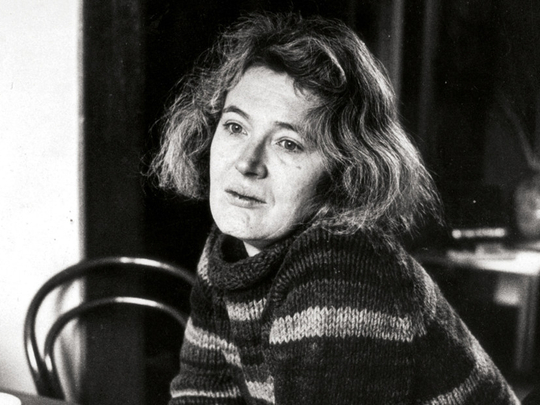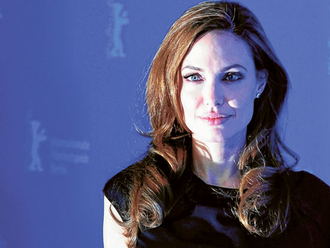
The Invention of Angela Carter
By Edmund Gordon, Oxford University Press, 544 pages, $35
Some time in the early 1960s, Angela Carter was asked to name her favourite women writers. She presumed the person meant — and it’s characteristic of Carter to have thought there was any ambiguity in the question — writers with “a specifically feminine sensibility”. “I said Emily Brontë, who’s pure butch,” she later wrote to a friend, “and cursed myself afterwards because the greatest feminine writer who’s ever lived is Dostoevsky, followed closely by Herman Melville.” Much later, a review of her third novel read, in part, “What is so intriguing about Miss Carter’s writing is that so little in it betrays the hand of the woman novelist.”
Leaving aside the unthinking use of “Miss” (Carter was married), and the fact that such a sentiment was unlikely to have been applied to the novels of Dostoevsky, the reviewer wasn’t entirely wrong. Carter was up to something very different from what, say, A.S. Byatt was doing. She disliked Byatt’s sort of novel; she also thought Jane Austen “obnoxious” and Jean Rhys a bit of a whinger. If there were books in which she saw her own life reflected, “Portnoy’s Complaint” by Philip Roth was among them. In fact, she held a similar view to that of her (male) reviewer: “I do not really write like a woman and some men may get upset.”
Was men getting upset the reason why acclaim was so subdued in Carter’s lifetime? It’s hard to say — or perhaps it’s too easy to say just that. Inevitably, it is one of the questions raised by Edmund Gordon’s elegant and subtle biography, the first to be authorised since Carter’s death a quarter of a century ago. As Gordon points out, Carter — who died of cancer at the age of 51 — had a “robust, somewhat cultish reputation” in certain literary circles towards the end of her life. But she had never received the kind of attention granted to near-contemporaries such as Ian McEwan or Martin Amis, and she had never won a major prize. (“Poor Ian has been dreadfully overrated,” she wrote to a friend.)
The morning after her death, in Gordon’s estimation, she acquired “great-author status” — an irony that her existing admirers greeted with some exasperation. Within a year, she was among the most studied British authors in academia, and her books — some of which were rejected by their intended publishers — have never been out of print since.
At the end of his book, Gordon suggests that this biography is only “a first step towards demythologising Angela Carter”. He invites further portraits, on the grounds that Carter is “much too big for any single book to contain”. It’s a measure of his modesty that he should strike such a note, but I’m not sure I share Gordon’s faith in his fellow biographers.
“Responsible” is probably not a word his iconoclastic subject would have used as praise, but — particularly in the light of books such as Jonathan Bate’s on Ted Hughes — it feels important to register how responsible Gordon’s work is. Mindful of Carter’s tendency to “spruce up the facts”, he aims to give a realistic account of a person who is now often seen, dully, as an irreproachable fairy godmother. But Gordon’s is a warm sort of scepticism, and he is attuned to Carter’s wit.
In a book designed to sketch the background to her writing, it must have been hard to preserve her spiky sense of humour, but Gordon quotes judiciously. The details he picks out suggest he has learnt how to see the world her way. This is done with such delicacy that it’s almost invisible, yet — as Gordon knows — without it a Life of Carter would be, in effect, a Life of someone else.
He makes very good use of Carter’s journals and letters, as well as his own interviews and travels; he is an excellent critic of her work; and he is precise, never prurient, about some of her tempestuous relationships with men. Given that Carter’s widower and son are alive — Alex was eight when his mother died — this is a tightrope walk only Fevvers, the winged “aerialiste” of “Nights at the Circus”, would tread without fear.
“It would be whingeing to say that men who are no better than I are very much more famous and very much richer,” Carter told the “Guardian” in 1984, “but it’s amazing what the Old Boys’ club does for itself.” When the boys listed the “important British contemporary writers”, she contended, they’d include Kingsley Amis and Malcolm Bradbury, but omit Doris Lessing and Beryl Bainbridge. They certainly never included her — unless the boys were B.S. Johnson or Anthony Burgess, both of whom admired her work, and neither of whom were exactly mainstream.
Of course, Carter had a point. And yet. She wasn’t just female, she was original — “exorbitantly varied”, as Gordon puts it — and much less well-behaved than most British fiction was at the time. Into a world of social realism she flung dirty, erotic, malevolent, marvellous, uncanny tales about circus performers and incestuous siblings. She borrowed liberally from genre fiction and folklore, and made the edges of pulp seem porous. The fact that readers didn’t quite know what to make of what she wrote wasn’t necessarily a result of her gender. Nevertheless, when I first read her, I remember wondering whether her novels were, in some way, a specifically feminist experiment. I found the worlds of “The Magic Toyshop” and “Nights at the Circus” astonishingly inventive, but their prose pretty chaotic. For a reader attuned to the various forms of rigour in early Ishiguro, Barnes or McEwan, the baroque, unshackled stream of Carter’s sentences looked like it was taking up the challenge offered by the French feminists who dreamt of an “ecriture feminine”.
From Gordon’s account, that doesn’t seem quite right. Carter wasn’t enough of a subscriber to any kind of school to have enacted such a thing. Still, it’s close to what she knew she was doing. She described “Heroes and Villains”, proudly, as “a juicy, overblown, exploding Gothic lollipop”. She aimed, in “The Passion of New Eve”, “to beautify [the prose] to such an extent that it becomes like uglifying”. She feared “the purplest kind of notoriety” and worried that “The Infernal Desire Machines of Dr Hoffman”, which was considered “much too excessive” by its designated publisher, would mark “the beginning of my obscurity”.
The great critic Lorna Sage, who later became one of Carter’s best friends, alerted readers to “the sheer vulgarity of her tastes”; Carter’s work, she said in 1974, was “sometimes absorbing, often dreadful, always unrepentant”.
Today, that assessment feel more useful than the unquestioning adoration that replaced it. In writing her novels, Carter threw all sorts of things at the paper. Dismissive of the idea that anything was not allowed, she was occasionally as undisciplined as she worried she would be. But in the process, she became the most bracingly, incorrigibly, voluptuously exceptional writer of her time.
For me, her journalism and her stories offer a more direct hit of her mischievous mind, as does her essay on the legacy of the Marquis de Sade, “The Sadeian Woman”. Carter was a brilliant thinker. Some of her pieces (try reading her on a literary festival in Ilkley) are funny on every page. And for all the praise heaped on her most “mature” novel, “Wise Children”, I think “The Bloody Chamber”, her reworking of fairy tales that she had mulled over for decades, may be the best thing she wrote.
Part of Carter’s canonical status has to do with her influence, most immediately on Salman Rushdie, whom she backed without reservation, and on Kazuo Ishiguro and Pat Barker, both of whom she taught. Her younger admirers include Ali Smith, Sarah Waters, David Mitchell and China Mieville. For her generative powers, Carter deserves a special title. I doubt she would have gone for “fairy godmother”, but she might have been happy to remind us that some of her relatives were witches.
–The Telegraph Group Limited, London 2016









